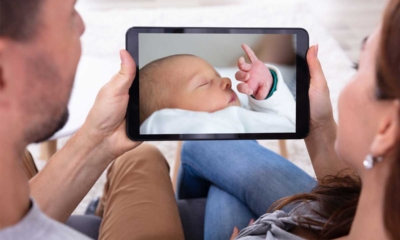Universal remotes unify home entertainment systems that otherwise would not work with each other. A universal remote is a handheld device that consolidates the functionalities of various remote-control devices with a single unit. Traditionally, TV was the hub for home entertainment, connecting multiple systems, including DVD/Blu-ray players, surround sound, game consoles, etc. With the advanced development and rapid adoption of smart home technologies in recent years, universal remotes are also being adapted to manage a variety of smart home devices. Universal remote, or smart remote, can connect devices from different manufacturers and brands, thus amplifying the user experience by connecting other vice disconnected services. Many universal remotes also come up with nice ad-on features, such as glowing in the dark feature to make it easier to find the device as well as with options for saving user preferred fast key options.

In addition to TV, sound, gaming, and other entertainment systems, universal remotes can communicate with smart home devices, such as climate control, lighting systems and smart home hub. Some of the more advanced smart remote controls, such as Logitech Harmony, are compatible with over 270,000 devices. What’s more exciting is the technological breakthroughs powering these devices thanks to the advanced development in the processors. In this article, we will take a closer look at technologies that are pushing the advancements in intelligent remote controls, but first, let’s familiarize ourselves with different types of universal remotes.
Learning Remotes vs. Multi-Brand Remotes
Universal remotes can be divided into two distinctive categories: learning remotes and multi-brand remotes. Learning remotes often come with some preprogrammed functions that are compatible with popular electronic models. Still, they also have the ability to read and internalize the functions of other remotes, such as your original TV or smart home control. This learning ability is based on infrared signals. To program a remote, users can simply hold the universal remote’s signal point against the head of another remote, and the commands from the original remote can then be transmitted to the universal remote via infrared signals. Learning remotes can manage various home devices, including smart home hub, entertainment, and utility devices, crediting them a title as the truly universal remote.

Multi-brand remotes are preprogrammed to operate a variety of devices from various brands. Therefore, the user does not need to spend time configuring the remote with several devices. Multi-brand remotes can most often manage the main functions of up to four devices, such as volume and channel selection.
Universal remotes are often sold in two or more price categories, reflecting their performance capabilities and compatibility with other devices. Next, we will take a closer look at four important technologies that define the compatibility and performance of a universal remote.
Infrared (IR) Signal Technology
Many remote controls are equipped with a small red light at the head of the remote control. The purpose of this small red light is to transmit infrared light between the remote and the devices that are connected with the remote. Many audiovisual (AV) devices still rely on infrared (IR) technology to receive commands, making IR signal compatibility a relevant feature for a universal remote. The downside of IR is that the user will have to point the head of the remote control directly at the device to transmit commands, which can be troublesome if there are obstructions in the way. W-Fi® enabled universal remotes, as well as Bluetooth® and radio frequency-powered universal remotes, are changing this paradigm.

Wi-Fi Enabled Universal Remotes
Wi-Fi enabled remotes allow the user to browse through and discover TV programs via a Wi-Fi connection. It can also collect and transmit the latest information, such as financial news or sports statistics, to a small screen on your universal remote. This feature lets the user fully benefit from the timely information that is usually updated quickly on online channels, such as news websites. Some Wi-Fi friendly remotes can control smart home devices, such as smart assistants and other voice-controlled devices. Still, universal remotes with a built-in voice-control are a rare find.
Bluetooth Enabled Universal Remotes
Bluetooth as a signal is a fantastic way to transfer data between devices on a short range of up to 33 feet (10 meters). Bluetooth signal is especially used for portable devices, such as wireless headphones, music players, and fitness trackers. Bluetooth also offers added functionality and interesting use cases for universal remotes. An increasing number of entertainment devices, such as streaming media devices and game consoles, are controlled via Bluetooth connection, making Bluetooth capability a prerequisite for a truly universal remote control.
Universal Remotes with Radio Frequency (RF) Capability
Would you like to be able to turn on the TV from another room? This is possible with universal remote controls that rely on radio frequency to control all things electronic. Radio frequency (RF) capable universal remotes send out RF signal commands, which can pass through walls and other obstacles, and an RF extender then receives this signal. The RF extender then converts and beams out the same command at an infrared wavelength, which can be detected by other more generic electronic devices.
How Ambiq Contributes
Ambiq’s ultra-low power multi-protocol Bluetooth Low Power wireless microcontrollers are at the heart of millions of endpoint devices, including wireless home devices. Ambiq’s leading ultra-low power SoCs can support key technologies enabling endpoint AI for smart devices. Future generations will include additional multi-protocol communications such as Bluetooth® Mesh, ANT+, RF4CE, and Zigbee®.
Built on the patented Subthreshold Power Optimized Technology (SPOT®) platform, Ambiq’s products reduce the total system power consumption by nanoamps for all battery-powered endpoint devices.
Simply put, our solutions enable endpoint intelligence everywhere.
Charlene Wan


